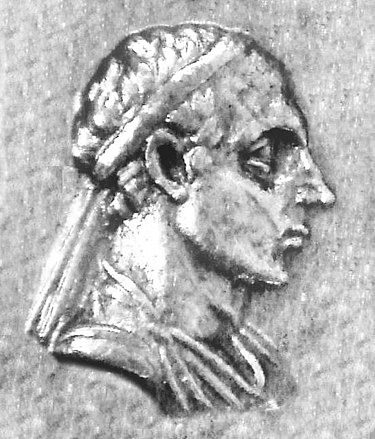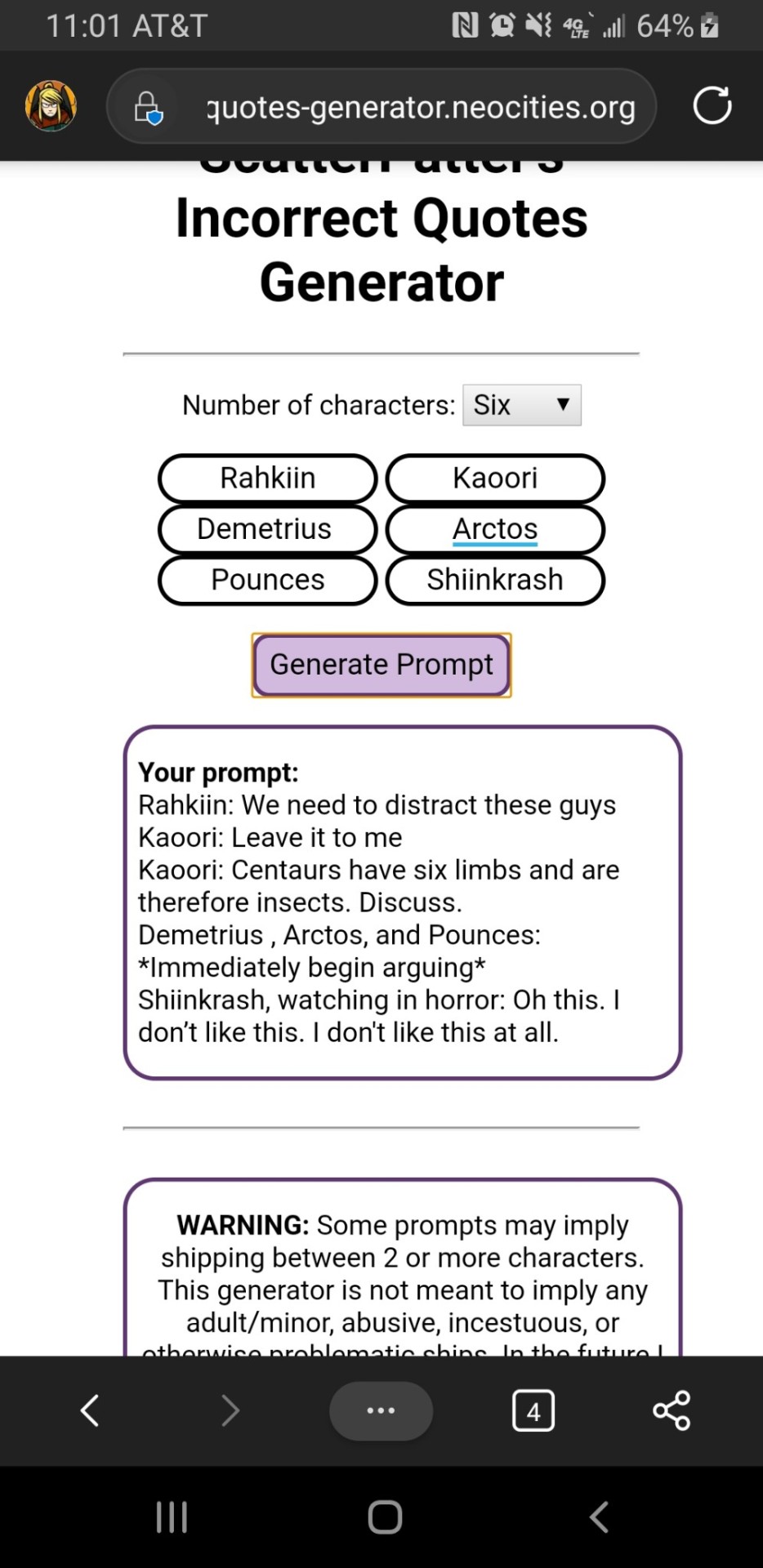#Demetrius Monk
Text


#demetrius styles#designer#style creator#suit#tie#pocket square#dress shoes#double monk shoes#monk strap#style#handsome#sharp#sexy#suave#men's fashion#phyne#attractive#fine#blue suit#beard
13 notes
·
View notes
Text
Saints&Reading: Wednesday, September 6, 2023
august 24_september 6
THE APPEARANCE OF THE MOST HOLY MOTHER OF GOD TO THE MONK SERGEI OF RADONEZH:

Late at night, St. Sergius was reading an Akathist to the Mother of God. Having finished his habitual rule, he sat down to rest a bit, but suddenly he said to his disciple, St. Micah, "Be alert, my child, for we shall have a wondrous visitation." Scarcely had he uttered these words than a voice was heard: "The All-Pure One approaches!"
St. Sergius rushed from the cell to the entrance, and suddenly it was illumined by a bright light, brighter than the sun. He beheld nearby in imperishable glory the Mother of God, accompanied by the Apostles Peter and John. Unable to bear such a vision, St. Sergius reverently prostrated himself before the Mother of God.
She said to him, "Fear not, My chosen one! I have come to visit you. Your prayer for your disciples and your monastery has been heard. Do not be troubled, for your habitation shall prosper, not only in your lifetime, but also after your departure to God. I will be with your monastery, supplying its needs abundantly, and protecting it." Having said this, the Mother of God disappeared.
For a long time St. Sergius was in an inexpressible rapture, and having come to himself, he went to St. Micah. "Tell me, Father," he asked, "what is the meaning of this miraculous vision? My soul nearly left my body from terror!" But St. Sergius was silent, and only his luminous face spoke of the spiritual joy which he had experienced. "Wait a bit," he said finally to his disciple, "my soul also trembles because of this wondrous vision."
After a while St. Sergius summoned two of his disciples, Sts. Isaac and Simon, and shared with them the vision and the promise of the Theotokos. They all sang a Molieben to the Mother of God. St. Sergius spent the remaining part of the night unable to sleep, calling to mind the divine vision.
The appearance of the Mother of God at the cell of St. Sergius, at the present place of the Serapionov Chamber, was on one of the Fridays of the Nativity Fast in 1385. The commemoration of the visit of the Mother of God to the Trinity Monastery and of Her promise was reverently kept by the disciples of St. Sergius.
On July 5, 1422 the holy relics of St. Sergius were uncovered, and soon after an icon of the Appearance of the Mother of God was placed on his grave. The icon was honored with great reverence.
In 1446, Great Prince Basil was besieged at the Trinity Monastery by the armies of Princes Demetrius Shemyaka and John of Mozhaisk. He barricaded himself in the Trinity Cathedral, and when he heard that he was being sought, he took the icon of the Appearance of the Mother of God and with it met Prince John at the southern church doors, saying: "Brother, we kissed the Life-Creating Cross and this icon in this church of the Life-Creating Trinity at this grave of the Wonderworker Sergius, that we would neither intend nor wish any evil to any of our brethren among ourselves. Now I do not know no what will happen to me here."
Monk Ambrose reproduced the icon of the Appearance of the Mother of God to St. Sergius, carved in wood in the mid-fourteenth century.
In 1552, Tsar Ivan the Terrible took the icon of the Appearance of the Mother of God on his Kazan Campaign. The most famous icon, written in 1588, was by the steward of the Trinity-Sergiev Lavra, Eustathius Golovkin, on a board from the wooden reliquary of St. Sergius, which was taken apart in 1585 when the relics of St. Sergius were placed in a silver reliquary.
Through this icon, the Mother of God repeatedly protected the Russian army. In 1657, Tsar Aleksei Mikhailovich took it on the Polish campaign. In 1703, the icon took part in all the military campaigns against Swedish King Charles XII, and in 1812 Metropolitan Platon sent it to the Moscow military levy. The icon was carried in the Russo-Japanese War of 1905, and during World War I it was at the quarters of the supreme commander-in-chief in 1914.
A church was built over the grave of St. Micah and at its consecration on December 10, 1734 was named in honor of the Appearance of the Most Holy Theotokos and the holy Apostles to St. Sergius of Radonezh.
On September 27, 1841 the church was restored and consecrated by Metropolitan Philaret of Moscow who said: "By the grace of the All-Holy and All-Sacred Spirit the restoration of this temple is now accomplished, fashioned before us in honor and memory of the Appearance of our Lady the Most Holy Theotokos to our holy God-bearing Father Sergius, to which St. Micah was also an eyewitness."
The commemoration of this grace-bearing event is rightly marked by the consecration of a church, however, this whole monastery is a memorial of that miraculous visit. Therefore, its purpose in the continuing centuries was the fulfillment of the promise of the heavenly Visitor: "This place shall endure."
In memory of the visit of the Mother of God at the Trinity-Sergiev Monastery, an Akathist to the Most Holy Theotokos is sung on Fridays, and a special service in honor of the appearance of the Mother of God is celebrated at the monastery on August 24, on the second day of the leave-taking of the Feast of the Dormition of the Most Holy Theotokos.
Source: Orthodox Church in America_ OCA
THE PRIESTMARTYR EUTYCHIUS ( 1th. c)

The PriestMartyr Eutychius, a disciple of the holy Apostles John the Theologian and Paul, lived from the I Century into the beginning II Century and was from Palestinian Sebasteia. Although Saint Eutychius is not reckoned among the number of the 70 Disciples, he received the title Disciple for his labours together with the older Apostles, by whom he was made bishop. Having heard the preaching about Christ the Saviour, Saint Eutychius at first became a student of the Apostle John the Theologian, and then having met the Apostle Paul, he preached with him on the early journeys. According to tradition, Saint Eutychius underwent many sufferings: they starved him with hunger, struck at his body with iron, flung him in the fire, and then devoured by wild beasts. One time, a lion was let loose upon the saint, which frightened everyone in that it rendered praise to the Creator – having been given a human voice. The Priestmartyr Eutychius finished his works in his native city, where he was beheaded with a sword at the beginning of the II Century.


HEBREWS 7:26-8:2
26 For such a High Priest was fitting for us, who is holy, harmless, undefiled, separate from sinners, and has become higher than the heavens; 27 who does not need daily, as those high priests, to offer up sacrifices, first for His own sins and then for the people's, for this He did once for all when He offered up Himself. 28 For the law appoints as high priests men who have weakness, but the word of the oath, which came after the law, appoints the Son who has been perfected forever.
1 Now this is the main point of the things we are saying: We have such a High Priest, who is seated at the right hand of the throne of the Majesty in the heavens, 2 a Minister of the sanctuary and of the true tabernacle which the Lord erected, and not man.
MARK 4:35-41
35 On the same day, when evening had come, He said to them, "Let us cross over to the other side." 36 Now when they had left the multitude, they took Him along in the boat as He was. And other little boats were also with Him. 37 And a great windstorm arose, and the waves beat into the boat, so that it was already filling. 38 But He was in the stern, asleep on a pillow. And they awoke Him and said to Him, "Teacher, do You not care that we are perishing?" 39 Then He arose and rebuked the wind, and said to the sea, "Peace, be still!" And the wind ceased and there was a great calm. 40 But He said to them, "Why are you so fearful? How is it that you have no faith?" 41 And they feared exceedingly, and said to one another, "Who can this be, that even the wind and the sea obey Him!"
#orthodoxy#orthodoxchristianity#easternorthodoxchurch#originofchristianity#spirituality#holyscriptures#gospel#bible#wisdom#saints
2 notes
·
View notes
Text

Nov. 10th. Apostles Erastus, Olympas, Herodion, Sosipater, Quartus, and Tertius of the Seventy; Martyr Orestes of Cappadocia
1. The Holy Apostles of the Seventy: Olympas, Erastus, Rodion, Sosipater, Quartus and Tertius lived during the first century.
Saint Rodion, or Herodion (was a kinsman of the Apostle Paul (Romans 16:11), and left the bishop’s throne at Patras to go to Rome with the Apostle Peter. Saint Olympas was also a companion of the Apostle Peter. Saints Rodion and Olympas were beheaded on the very day and hour when Saint Peter was crucified.
Saint Olympas was mentioned by the holy Apostle Paul (Rom 16:15). He was also a companion of the Apostle Peter. He was beheaded on the very day and hour when Saint Peter was crucified.
The holy Apostles Sosipater (April 28), Erastus, Quartus and Tertius (October 30) were disciples of Saint Paul.
Saint Sosipater, a native of Achaia, was Bishop of Iconium, where also he died. Saint Paul mentions him in Romans 16:21.
The Apostle to the Gentiles speaks of Erastus and Quartus in the Epistle to the Romans, “And Erastus, the city treasurer, greets you, and Quartus, a brother” (Rom 16: 23).
Saint Quartus endured much suffering for his piety and converted many pagans to Christ, dying peacefully as a bishop in the city of Beirut.
Saint Tertius is mentioned in the Epistle to the Romans, “ I, Tertius, who wrote this epistle, salute you in the Lord” (Rom 16:22).
Saint Tertius, to whom Saint Paul dictated the Epistle to the Romans, was the second Bishop of Iconium, where also he died.
Troparion, tone 3:
Holy Apostles, Erastus, Olympas, Herodion, Sosipater, Quartus and Tertius, entreat the merciful God, to grant our souls forgiveness of transgressions.
2. The Martyr Orestes the Physician of Cappadocia lived at the end of the third century in the city of Tyana in Cappadocia in the time of the emperor Diocletian (284-311). He was an illustrious and capable soldier, and from childhood Saint Orestes was truly a good Christian.
By order of the emperor, the military officer Maximinus was sent to Tyana to deal with Christianity, which then had spread widely throughout Cappadocia. Orestes was among the first brought to trial to Maximinus. He bravely and openly confessed his faith in the Crucified and Risen Lord, Jesus Christ. The prosecutor offered the saint riches, honors and renown to renounce God, but Saint Orestes was unyielding.
At the order of Maximinus, they took Orestes to a resplendant pagan temple and again demanded that he worship idols. When he refused, forty soldiers, took turns one after the other, beating the holy martyr with lashes, with rods, with rawhide, and then they tormented him with fire. Saint Orestes cried out to the Lord, “Establish with me a sign for good, let those who hate me see it and be put to shame (Ps. 85/86:17). “And the Lord heard His true servant. The earth began to tremble, and the idols fell down and were smashed. Everyone rushed out of the temple, and when Saint Orestes came out, the very temple tumbled down.
Infuriated, Maximinus ordered the holy martyr to be locked up in prison for seven days giving him neither food nor drink, and on the eighth day to continue with the torture. They hammered twenty nails into the martyr’s legs, and then tied him to a wild horse. Dragged over the stones, the holy martyr departed to the Lord in the year 304. His relics were thrown into the sea.
In 1685, when Saint Demetrius, later the Bishop of Rostov, (October 28) was preparing the Life of Saint Orestes to be printed by the Kiev Caves Lavra, he became tired and fell asleep. The holy martyr Orestes appeared to him in a dream.
He showed him the deep wound in his left side, his wounded and severed arms, and his legs which had been cut off. The holy martyr looked at Saint Demetrius and said, “You see, I suffered more torments for Christ than you have described.” The humble monk wondered whether this was Saint Orestes, one of the Five Martyrs of Sebaste (December 13). The martyr said, “I am not that Orestes, but he whose Life you have just finished writing.”
Troparion, tone 4:
Your holy martyr Orestes, O Lord, through his sufferings has received an incorruptible crown from You, our God. For having Your strength, he laid low his adversaries, and shattered the powerless boldness of demons. Through his intercessions, save our souls!
8 notes
·
View notes
Photo

Today we also celebrate our Venerable Father Sergius of Radonezh. Saint Sergius was born in Rostov, north of Moscow, about the year 1314. Named Bartholomew in Baptism, he was brought up in Radonezh, and at the death of his parents he withdrew to the wilderness to become a monk. It is notable that without having been trained in a monastery, he was of such a spiritual stature as to be able to take up the perilous eremitical life from the beginning, without falling into delusion or despondency. When he had endured with courage the deprivations of the solitary life, other monks began to come to him, for whom he was made abbot against his will. On the counsel of Philotheus, Patriarch of Constantinople, he organized his monks according to the cenobitic life, appointing duties to each. While Anthony and Theodosius of Kiev, and the other righteous Fathers before Sergius, had established their monasteries near to cities, Sergius was the leader and light of those who went far into the wilderness, and after his example the untrodden forests of northern Russia were settled with monks. When Grand Duke Demetrius Donskoy was about to go to battle against the invading Tartars, he first sought the blessing of Saint Sergius, through whose prayers he was triumphant. Saint Sergius was adorned with the highest virtues of Christ-like humility and burning love for God and neighbour, and received the gift of working wonders, of casting out demons, and of discretion for leading souls to salvation. When he served the Divine Liturgy, an Angel served with him visibly; he was also vouchsafed the visitation of the most holy Theotokos with the Apostles Peter and John. He was gathered to his Fathers on September 25, 1392. At the recovery of his holy relics on July 5, 1422, his body and garments were found fragrant and incorrupt. His life was written by the monks of Epiphanius, who knew him. May he intercede for us always + Source: https://www.goarch.org/chapel/saints?contentid=2344 (at Radonezh) https://www.instagram.com/p/Ci6iRHropc4/?igshid=NGJjMDIxMWI=
7 notes
·
View notes
Text
The Milindapañha

“The Milindapañha ("Questions of Milinda") is a text from the Pali Canon that records a dialog between the Buddhist sage Nagasena and Bactrian-Greek King Milinda (Menander).
Composed around the beginning of the Common Era, and of unknown authorship, the Milindapañha is set up as a compilation of questions posed by King Milinda to a revered senior monk named Nagasena. This Milinda has been identified with considerable confidence by scholars as the Greek king Menander of Bactria, in the dominion founded by Alexander the Great, which corresponds with much of present day Afghanistan. Menander's realm thus would have included Gandhara, where Buddhism was flourishing at that time.
What is most interesting about the Milindapañha is that it is the product of the encounter of two great civilizations — Hellenistic Greece and Buddhist India — and is thus of continuing relevance as the wisdom of the East meets the modern Western world. King Milinda poses questions about dilemmas raised by Buddhist philosophy that we might ask today.[1]
In his dialog with the King, the monk Nagasena uses the now famous simile of the chariot to explain the Buddhist concept of the not-self (anatman). Just as the chariot is not one singular independent thing, but it is composed of parts, in the same way, that which we call the "self" (atman) is not a singular independent entity, but it is likewise composed of parts. Just as the chariot comes into being based on mulitple causes and conditions, so does the "self."”

Portrait of Menander I
“King Malinda
Kind Malinda has been identified as the Indo-Greek king Menander I of Bactria, who reigned from Sagala (modern Sialkot, Pakistan).
Menander I
According to the Milindapanha, Milinda/ Menander, indentified as Menander I,[13] embraced the Buddhist faith. He is described as constantly accompanied by a guard of 500 Greek ("Yonaka") soldiers, and two of his counselors are named Demetrius and Antiochus.
In the Milindanpanha, Menander is introduced as the "[k]ing of the city of Sāgala in India, Milinda by name, learned, eloquent, wise, and able". Buddhist tradition relates that, following his discussions with Nāgasena, Menander adopted the Buddhist faith "as long as life shall last"[14] and then handed over his kingdom to his son to retire from the world. It is described that he attained enlightenment afterwards.[14]”

Indian-standard coinage of Menander I. Obv ΒΑΣΙΛΕΩΣ ΣΩΤΗΡΟΣ ΜΕΝΑΝΔΡΟΥ "Of Saviour King Menander". Rev Palm of victory, Kharoshthi legend Māhārajasa trātadasa Menandrāsa, British Museum.[12]
Source: https://encyclopediaofbuddhism.org/wiki/Milindapa%C3%B1ha
See also on Menander I Soter, his career and his relation with Buddhism https://en.wikipedia.org/wiki/Menander_I
4 notes
·
View notes
Text

SAINTS OCTOBER 26
ST. DEMETRIUS, MARTYR
St. Alfred the Great, 899 A.D. King of Wessex, scholar, and renowned Christian monarch. Alfred was born in 849, the fifth son of the Wessex king. During a journey to Rome in 853, he was accepted as a godson by Pope Leo IV. He was a great scholar, translating classics for his people, and early on seemed destined for a career in the Church. Instead, he became king and was forced to spend most of his reign in conflict with the Danes who were then threatening England. His work as a patron of the arts, literature, and especially the Church made him a beloved figure in England.
St. Cuthbert, 758 A.D. Benedictine archbishop of Canterbury. He was a monk at Lyminge, in Kent, England, until about 736, when he was appointed the bishop of Hereford. About 740, he became the archbishop of Canterbury. He is remembered as one of St. Boniface’s correspondents in England.
St. Eadfrid, 675 A.D. Founder of Leominster Priory and a priest of Northumbria and Mercia, England.
St. Bean. On December 16, there is named in the Roman Martyrology and in certain Irish calendars a Saint Bean in Ireland, who had been confused with the St. Bean whose feast is still observed in the Scottish diocese of Aberdeen, but on October 26, as founder of the bishopric of Mortlach in Banff which was the forerunner of that of Aberdeen. Nothing else is known about him. The fourteenth century chronicler Fordun, states that he was made bishop by Pope Benedict VIII, at the request of Malcolm Canmore, who is said to have founded an Episcopal monastery at Mortlach. If true, this would be between 1012 and 1024; but the See of Mortlach is generally said to date from 1063. St. Bean's dwelling place is supposed to have been at Balvanie, near Mortlach (Balbenimor, "the dwelling of Bean the Great").
St. Evaristus, Roman Catholic Pope. St. Evaristus succeeded St. Clement in the See of Rome in the reign of Trajan and governed the Church about eight years, being the fourth successor of St. Peter.
0 notes
Text
Dance Floor Essentials 2023: Afro House Beatport

- Artists: Beatport
DATE CREATED: 2023-01-18
GENRES: Afro House
Tracklist :
1. Emmanuel Jal, KEENE, Angelos - Budáh(Original Mix)
2. Coco Em, Sisian, Kasiva - Land (Black) First (feat. Sisian & Kasiva)(Original Mix)
3. Demayä - Nasty(Original Mix)
4. Zimsto Eroofini, CIOZ - Giya(Original Mix)
5. SoulSista, Red Monk - Mooi(NenaHalena Remix)
6. HomeBoyz, Nes Mburu - Kasichana(Extended Mix)
7. Nash La Musica, Aphendulwa - Ilanga feat. Aphendulwa(A.C.N. Remix)
8. Copyright, Shovell - Kama Yeah(Samm, MAXI MERAKI, Marlin Remix)
9. Philou Louzolo, Mavhungu - Mbiluni Yanga featuring Mavhungu(Extended Mix)
10. DJ Tomer, Ahmed Sosso, Gil Bokobza, Ricardo Gi - Vaiaco(Original Mix)
11. Sabo - Afro Chooz(DJ CHUS Remix)
12. AMEME, Baron (FR) - Like That(Extended Mix)
13. KAMUSHEZ, L3MAYIAN - Koito(Saint Evo Remix)
14. Joezi - Pursuit of Happiness(Original Mix)
15. Eran Hersh, Neil Amarey - Rej(Extended Mix)
16. Demetrius, Hyenah - Life's Plan(JAMIIE Remix)
17.
Read the full article
0 notes
Text
Dance Floor Essentials 2023: Afro House Beatport

- Artists: Beatport
DATE CREATED: 2023-01-18
GENRES: Afro House
Tracklist :
1. Emmanuel Jal, KEENE, Angelos - Budáh(Original Mix)
2. Coco Em, Sisian, Kasiva - Land (Black) First (feat. Sisian & Kasiva)(Original Mix)
3. Demayä - Nasty(Original Mix)
4. Zimsto Eroofini, CIOZ - Giya(Original Mix)
5. SoulSista, Red Monk - Mooi(NenaHalena Remix)
6. HomeBoyz, Nes Mburu - Kasichana(Extended Mix)
7. Nash La Musica, Aphendulwa - Ilanga feat. Aphendulwa(A.C.N. Remix)
8. Copyright, Shovell - Kama Yeah(Samm, MAXI MERAKI, Marlin Remix)
9. Philou Louzolo, Mavhungu - Mbiluni Yanga featuring Mavhungu(Extended Mix)
10. DJ Tomer, Ahmed Sosso, Gil Bokobza, Ricardo Gi - Vaiaco(Original Mix)
11. Sabo - Afro Chooz(DJ CHUS Remix)
12. AMEME, Baron (FR) - Like That(Extended Mix)
13. KAMUSHEZ, L3MAYIAN - Koito(Saint Evo Remix)
14. Joezi - Pursuit of Happiness(Original Mix)
15. Eran Hersh, Neil Amarey - Rej(Extended Mix)
16. Demetrius, Hyenah - Life's Plan(JAMIIE Remix)
17.
Read the full article
0 notes
Photo

Hunter Ringsmith (Lysander) and Bryan Barbarin (Demetrius) on left; Lilli Hokama (Hermia) and Renea S. Brown (Helena) on right; top: Nubia M. Monks (Titania) and Danaya Esperanza (Puck).
A Midsummer Night’s Dream, Folger Theatre, 2022.
Photo by Brittany Diliberto. (source)
#shakespeare#msnd2022#a midsummer night's dream#hunter ringsmith#bryan barbarin#lilli hokama#renea s brown#nubia m monks#danaya esperanza
1 note
·
View note
Text
Barefoot in the Kitchen
Morning sunlight flooded the open kitchen, warming the bisque tiles beneath her bare feet as G’hana flitted from one recipe in progress to the next. A gentle, upbeat tune bubbled softly from the nearby table orchestrion, the music melting into the soundscape created by a simmering stock pot over a crackling fire.
It had become a daily ritual that began with the bones and carcass scraps from yesterday’s dinner, given a shroud of freshly chopped vegetables and buried under water. Through the morning, the heat from the fire extracted the marrow and other nutrients into the water, the fire fed just enough to keep it going as she ensured that coffee and tea stations and fresh fruit baskets throughout the estate were filled, stopping by the pot each trip to keep a keen eye on the temperature, to take a sniff or perhaps add a pinch of coarse salt.
In the afternoon, it would be strained, and become the base for a hearty stew, heavy with tender meat and vegetables and thoughtfully flavored with herbs and a splash of wine. Each day’s stew was different. Windsday’s antelope stew was different from Firesday’s, because Windsday’s antelope stew was made with chicken stock, and Firesday’s with duck - and different bases called for different vegetables, different seasonings, a different wine pairing.
While the stew simmered, G’hana made sandwiches, or tried her hand at baking. Baked goods - even simple breads - were not staples for the Yarak of Gyr Abania. They sometimes obtained such foodstuffs through trading with the Hyur, but baking as a culinary art was largely unknown to them. The pastries and cakes that G’hana stocked came from local bakers with whom she slowly built relationships through flattering small talk and careful bartering.
Flattery wasn’t in her nature, nor was the use of unnecessary honorifics, but new to the cities as she was, G’hana felt out of her depth, anxious - submissive, even - for the first time in her life. She thought it would bother her more, this descent from feared huntress to humble house servant, but somehow, it just didn’t. She had found herself in awe of director Mira’s refined elegance and sharp mind for business, and grateful for her willingness to try a new approach for a foreign stranger - something that surely presented as many risks as it offered benefits. Each person she met left her in awe in their own way: Khair, the physician from whom something like peace or comfort emanated, who was endlessly tolerant of her questions, Demetrius who spoke with dragons, a particularly spirited Lalafell called Conor, and R’zevi Tia, a monk of the order.
She was humbled by them all, but never felt small next to them, regardless of her title, and that… brought out a different side of her, perhaps. Being a leader, an enforcer, respected, feared, did not make her appreciated, nor did it make her belong. G’hana wasn’t sure if she belonged here, either, but this place felt important, this time meaningful.
Mornings alone in the kitchen were a different kind of solitude from the one she was used to. She allowed herself to become absorbed in simple tasks of silent nurturing, and thought of nothing in particular as she ran through her “to do” list. Perhaps this was meditation.
((Mentioned: @mira-isenhart-xiv, @khairxiv, @demetrius-dotharl, @conobharo-cobharo-xiv, @rzevi-tia-ffxiv))
12 notes
·
View notes
Text
What to Visit in Skiathos: The Monastery of Evangelistria

Faith plays an important duty in the life of the Greeks, as well as especially in the islands, where lots of people still strictly regard religious traditions, like fasting, for instance. The rich sailors' households often had their church, so that the saint or the Holy Mary would certainly supervise their safety. In Skiathos, as in all Greek islands, these churches abound. They were generally set up in magnificent areas, with magnificent views. Do not wait to take place a hike uphill as well as inland on the dusty roads to check out several of them. You will certainly always find there a bench to remainder, sometimes a water fountain with fresh water and also a minute of peace. For more information visit https://www.skiathosmystery.com
Among the need to tours during your stay in Skiathos, you will include the spectacular Monastery Evangelistria. Whether you are a follower or otherwise, this gorgeous building is worth a check out for numerous factors: the amazing landscape that surrounds the high-grade repair that was done there recently, greatly funded by European funds, the function it played in the building of contemporary Greece, its galleries of everyday life and also musical tools from around the world and also its store regional produce.
The Abbey of Evangelistria gets on the northeastern edge of the island, regarding 5km far from Skiathos Community, on Mount Karaflytzanakia, the greatest optimal of Skiathos, near the headwaters of the river Lechouni among lush as well as remarkable nature. It dominates the Aegean Sea which occasionally looks like the Atlantic Ocean when it crashes hugely on the rocks 450 m below.
If you are followers of trekking, you can reach the monastery walking, regarding an hr on a paved steep sloping road. For those who prefer to keep their breath to marvel at the top, the abbey can be gotten to by vehicle in about 20 mins. Only the last meters will certainly be covered walking.
The monastery was founded by two monks, Niphon, a native of Chios and also Gregory Hatzistamatis, from Skiathos, compelled to leave Mount Athos as a result of a conflict with the reclusive community. Gregory had inherited from his father a large land in the mountain where he chose to develop the abbey. The construction started in the 18th century, in 1794 to be specific, and also was finished in 1806.
The community of monks that lived there provided substantial assistance to the pre-revolutionary movements against the Turks and also the Greek Transformation of 1821. Do you understand that the first Greek flag, with the white cross on a blue background, was created, woven, honored, and increased for the very first time in the Monastery of Evangelistria?
In the mid-90s, when the old abbot Gerasimos died after 39 years of loyal service, for two years, no substitute came to take in hand the destiny of the monastery. In 1997, the arrival of the dynamic and also charismatic Peter Angelos noted the beginning of a long duration of creative thinking, progression, and extreme and successful improvement of the shelter.
Throughout months, they were associated with the construction or repair work of the church of the three domes topped with a roof covering of stone, committed to "The Annunciation of the Virgin". They also repaired the cells of the West Wing, the guest house, the kitchen, the bakery, the mythology gallery, the collection, the vestry of the churches of St. John and St. Demetrius, the house of the abbot, as well as paved the eastern yard of the storage tank. A winery was grown, as well as lots of fruit trees, ornamental plants, and also flowers.
The Abbey had lastly recovered its beauty and its majesty.
Not just the place is magnificent, yet in the museum of clerical life, visitors can appreciate the old vestments, manuscripts, as well as publications from the 17th century, old wooden crosses, as well as silver Byzantine icons.
Two times a year, the monastery is invaded by the faithful as well as by lots of foreign travelers. One is the procession of the Virgin, on the eve of August 15. The islanders sing candlelight appreciation to the Virgin and also it is tough to remain indifferent to this feeling of respect.
An additional essential moment in the life of the monastery is the Holy Week, which culminates in the Mass of the Rebirth, during the night from Saturday to Sunday. The clergyman then brings the Holy Light, that came from Jerusalem by a plane hired by an affluent shipowner from the island.
Besides these two minutes of the intense task, an abbey is a place of tranquility, a wonderful break from the bustle of the vacations, which will prompt you to reflect.
If you are fans of hiking, you can get to the monastery on foot, concerning an hr on a paved high sloping roadway. The abbey was established by two monks, Niphon, a local of Chios, and also Gregory Hatzistamatis, from Skiathos, required to leave Mount Athos as a result of a dispute with the monastic neighborhood. In the mid-90s, when the old abbot Gerasimos died after 39 years of devoted service, for two years, no substitute came to take in hand the destiny of the abbey. Two times a year, the abbey is gotten into by the faithful as well as by several international visitors. An additional important minute in the life of the monastery is the Holy Week, which culminates in the Mass of the Rebirth, throughout the night from Saturday to Sunday.
2 notes
·
View notes
Text










Repost from @balfoursyard on Instagram
“Who is your favorite Eric Balfour character? One of these or a different one?
“I know it's hard to choose one so choose as many as you need. 🙂 I wanted to list them all but Instagram has limits. Balfour fans don't!”
Eric stars as ;
.:. Duke Crocker in Haven
.:. Peter Farrell in Agenda Payback aka Unhinged
.:. Ryan Hinds in 200 Degrees aka Burn
.:. Sherrif Adam in Little Dead Rotting Hood
.:. Mark in A Midsummer’s Nightmare
.:. Comache / Bix in Hellride
.:. Trace McGraw in Dinoshark
.:. Brian Peluso in Conviction
.:. Kemper in Texas Chainsaw Massacre
.:. Spiro Dalon in Chicago PD S06E05
.:. Josh in 37 Problems
.:. Randall in Fashionista
.:. Nick Lowell in Ray Donovan S04E07
.:. Brad in Backcountry
.:. Gino in Franklin & Bash S03E04
.:. Daniel in Christine
.:. Bluffys in Inland Empire
.:. Michael Grey in Cell 213
.:. Will Edwards in The Legend of Hell’s gate
.:. Lucas Winnick in No Ordinary Family
.:. Frank in Do Not Disturb
.:. Jarrod in Skyline
.:. Victor Dean in Beatdown
.:. Jesus in Saving Grace
.:. Eric Gracen in Valemont
.:. Lenny Barlow in Monk S08E04
.:. Max Goodwin in Law & Order : Criminal Intent S08E10
.:. Prof. Jack Randall in Rise of the Gargoyles
.:. Taylor in Horsemen
.:. Eddie Carling in Life on Mars S01E09
.:. Maxwell in Fear Itself S01E12
.:. Sean in Spread
.:. Mahmoud in The Spirit
.:. Johnny Diamont in The Ex List S01E01
.:. Thief of Hands in What we take from eachother
.:. Paul Grogan in Protect and Serve
.:. Milo Pressman in 24
.:. Skip in The Elder Son
.:. Charlie Tibideaux in Sex, Love & Secrets
.:. Grant in In her Shoes
.:. David in Lie with Me
.:. Andrew in RX
.:. Ryan in Fearless
.:. Christopher Gains in Hawaii
.:. Calvin Banks in Veritas the Quest
.:. Eddie in The O.C.
.:. Saleem Haddad in Face of Terror
.:. Sheik’s Grandson in Secondhand Lions
.:. Gabe Dimas in Six Feet Under
.:. Prv Morris in Rain
.:. Charles “Spyder” Price in NYPD Blue S09E03
.:. Eli Beardsly in NYPD Blue S08E11
.:. Mark Griffin in The Chronicle S01E07
.:. Chapin Demetrius in Freakylinks S01E11
.:. Cameron in What Women Want
.:. Jason Kerns in Chicago Hope S06E10
.:. Frat Boy in The West Wing S01E06
.:. Cliff Morehouse in Nash Bridges S04E12
.:. Andy Martin in Scrapbook
.:. Hippie Guy in Can’t Hardly Wait
.:. Warren Goering in Dawson’s Creek S01E09
.:. Pizza Boy in Clueless S02E02
.:. Kyle in Trojan War
.:. Jesse in Buffy the Vampire Slayer
.:. Danny in Ink S01E09
.:. Vince Fortner in No One Would Tell
.:. Benjamin Avery in Dr Quinn, Medicine Woman S02E04 / S02E21
#ericbalfour#eric balfour#dukecrocker#duke crocker#haven#brianpeluso#brian peluso#conviction#kemper#texaschainsawmassacre#texas chainsaw massacre#thelegenofhellsgate#the legend of hellsgate#theoc#the oc#24#fashionista#unhinged#agendapayback#agenda payback#burn#200degrees#200 degrees#clueless#riseofthegargoyles#rise of the gargoyles#beatdown#backcountry#theexlist#the ex list
5 notes
·
View notes
Text
Saints&Reading: Wed., July 20, 2022
July 20_ July 7
VENERABLE THOMAS OF MT. MALEON (10th c.)

Saint Thomas of Mount Maleós was a military commander before becoming a monk. Strong and brave, he participated in many battles, and brought victories to his countrymen, for which he won much glory and honor. But, striving toward God with all his heart, Saint Thomas forsook the world and its vanity, and was tonsured as a monk.
With great humility he visited several Elders, asking for guidance in the spiritual life. After several years, Thomas received a blessing to live a solitary life in the wilderness. According to his biographers, Saint Thomas said that he was led by a pillar of fire to Mount Maleós by the Prophet Elias, while in an ancient Synaxarion of Constantinople it is written that Saint Thomas also appeared as a pillar of fire when the Holy Prophet Elias appeared to him, whose zealous way of life he emulated.
Dwelling in complete seclusion, Saint Thomas fought with invisible enemies with as much courage as he had displayed against the visible foes of his country. Reports of Saint Thomas's holy life could not be concealed from those living in the surrounding area. People began to flock to him seeking spiritual guidance, and those who suffered from sickness recovered, since he received from God a blessing to heal their infirmities.
He was always helping others, because even during his solitude, he prayed for everyone, and he trained himself to become a worthy instrument of God for the benefit of his neighbor.
Many of the faithful received help through the prayers of the Righteous Thomas. Even after his repose in the X century, he continues to heal those who seek his aid, from every passion and sickness.
Some of the Saint's Holy Relics are located in the Metropolis of Monemvasia and Sparta. He is particularly venerated in Lakonίa.
THE NUN EUPHROSYNIA, IN THE WORLD EUDOKIA GRAND DUCHESS OF MOSCOW (1407)

Saint Euphrosynē, in the world Eudokia, was the daughter of the Suzdal prince Demetrius Constantovich (+ 1383), and from 1367 was the wife of the Moscow Great Prince Demetrius of the Don. Their happy union was for Russia a pledge of unity and peace between Moscow and Suzdal.
Saint Alexis, Metropolitan of Moscow, and even Saint Sergius of Radonezh, who baptized one of the sons of Demetrius and Eudokia, had a great influence upon the spiritual life of Princess Eudokia. Saint Demetrius of Priluki (February 11) was the godfather of another son.
The holy princess was a builder of churches. In 1387 she founded the Ascension women’s monastery in the Moscow Kremlin. In 1395, during Tamerlane’s invasion into the southern regions of Russia, the Vladimir Icon of the Mother of God was transferred to Moscow upon her advice, miraculously defending the Russian land. During Lent, the princess secretly wore chains beneath her splendid royal garb. By her patronage the famous icon of the Archangel Michael was painted, and later became the patronal icon of the Kremlin’s Archangel Cathedral.
After raising five sons (a sixth died in infancy), the princess was tonsured as a nun with the name Euphrosynē. She completed her earthly journey on July 7, 1407 and was buried in the Ascension monastery she founded.
An old Russian church poem has survived, the lament of the princess for her husband, who had died at the age of thirty-nine.
Saint Euphrosynē is also commemorated on May 17.
Source: All texts Orthodox Church in America_ OCA


MATTHEW 13:36-43
36Then Jesus sent the multitude away and went into the house. And His disciples came to Him, saying, "Explain to us the parable of the tares of the field." 37 He answered and said to them: "He who sows the good seed is the Son of Man. 38 The field is the world, the good seeds are the sons of the kingdom, but the tares are the sons of the wicked one. 39 The enemy who sowed them is the devil, the harvest is the end of the age, and the reapers are the angels. 40 Therefore as the tares are gathered and burned in the fire, so it will be at the end of this age. 41 The Son of Man will send out His angels, and they will gather out of His kingdom all things that offend, and those who practice lawlessness, 42 and will cast them into the furnace of fire. There will be wailing and gnashing of teeth. 43 Then the righteous will shine forth as the sun in the kingdom of their Father. He who has ears to hear, let him hear!
1 CORINTHIANS 3:18-23
18 Let no one deceive himself. If anyone among you seems to be wise in this age, let him become a fool that he may become wise. 19 For the wisdom of this world is foolishness with God. For it is written, "He catches the wise in their own craftiness"; 20 and again, "The LORD knows the thoughts of the wise, that they are futile." 21 Therefore let no one boast in men. For all things are yours: 22 whether Paul or Apollos or Cephas, or the world or life or death, or things present or things to come-all are yours. 23 And you are Christ's, and Christ is God's.
#orthodoxy#orthodoxchristianity#easternchristianity#originofchristianity#spirituality#holyscriptures#gospel#bible#wisdom
3 notes
·
View notes
Text
Ok so I joined a new DnD campaign last night and I had a little too much fun playing with the incorrect quote generator while learning everyone's names.
Cast: Rahkiin (me) the alcoholic dragonborn paladin of Bahamut, Pounces the tabaxi ranger, Kaoori the tabaxi rogue, Nardwuar the drow sorcerer (?), Arctos the druid who is constantly shifted into a giant bear, Demetrius the elderly elf wizard, and Shiinkrash the kenku monk.





0 notes
Text
Stardew Valley Headcanon - Emily’s Clothing Therapy, Round 2
The mountain neighborhood and the Mullner family get a turn!
Maru - Gets a flouncy dress with an accurate map of the galaxy on it. Wears it every chance she gets.
Demetrius - Gold hot pants and black leather dance shoes. That’s it. He moonwalks out of the Mayor’s house and does a back handspring down the stairs.
Sebastian - Gets in an argument with Emily. “I don’t want to express myself. I express myself every day. I want to not express myself, and have people get it anyway.” Changes clothes anyway. Leaves in a pair of sweatpants, an oversized and overly comfy t-shirt, and crocs.
Linus - “Free clothes? Can we keep these!?” He emerges in what look like monks’ robes; loose, very heavy, and brown. He opens up the robes to reveal a tank top and running shorts. “Now I have something for every season, thanks!”
Evelyn - A vintage 1930s evening gown, topped with a wool cloche. She goes to the saloon and orders a sidecar.
George - Agrees with Sebastian for the first time EVER. “The worst part about leavin’ the dang house is getting dressed!” Leaves in flannel pajamas, goes to the saloon, and gets salty with anyone who dares comment on his outfit. Buys Evelyn’s drink. 157-heart event? ^_^
Alex - A superhero outfit. Green shirt and tights, yellow undies and cape. No mask. Red heart, outlined in yellow, on the front. “Meet my alter ego, Super Heart! I use super strength to bring justice and love to the world! My mom always said the heart is the strongest muscle.” After a brief pause, he turns to the mayor and laughs. “Hey Lewis, I’ll be outside bench pressin’ your truck!” He leaves, giggling and absolutely beaming.
Stay tuned for the trailer and Town Square.
#stardew valley headcanon#stardew valley emily#stardew valley maru#stardew valley sebastian#stardew valley linus#stardew valley evelyn#stardew valley george#stardew valley alex#clothing therapy#stardew valley demetrius#i am sdv trash#told ya there would be shitposting
288 notes
·
View notes
Text
Marley Rates Every Shakespearean Play*
Now that I have read every play by William Shakespeare* I think it’s time to do a rate of them all. Hold on to your horses, my friends, because this is probably going to get long.
Tragedies:
Julius Caesar: 8/10 I liked this one better the second time I read it. I still think parts are a bit slow, and some of the inherent drama seems to take a weird pitfall after they actually kill Caesar, and then there’s the war that pops up out of nowhere and gives the plot a significant change midway through. Still, though, the dialogue? Perfect.
Antony and Cleopatra: 7/10 I liked this one worse the second time I read it. Antony and Cleopatra aren’t likable but their deaths are still upsetting and I really like the dynamics between most of the characters. Unfortunately this one suffers a bad case of ‘fifteen plot lines going on at once, also let’s go to Syria for Reasons’
Coriolanus: 6/10 This one starts off mega slow but gets considerably better later on. Points for the dialogue being so awkward at points that it’s amusing. Also points for being mega super obviously gay all over the place (even more so than most Shakespeare plays, honestly.)
Romeo and Juliet: 6/10 I like the idea and presentation of this one but it’s so overrated that it tends to get old quickly. It’s good but it’s not that good. Also, Capulet isn’t given enough credit for being a terrible father. Awful. The worst. 0/10 for good parenting. Also, WHAT HAPPENED TO BENVOLIO.
Macbeth: 7/10 high score for things like witches, pretty speeches, blood, ghosts, usurpations, and being short enough to not get tedious. Low score for “what, you egg” and “O, by whom?”
Hamlet: 3/10 This one really sells the point of wanting you to feel for these characters but they’re all so angst-ridden that I do not. Okay mostly Hamlet. Actually, almost exclusively Hamlet, but he’s on stage ALL THE TIME and never shuts up. Ever. (Although notably I didn’t like anyone else in the play either.)
Othello: 10/10 This play, of all the tragedies, hurts me the most. It might be the ONLY one that actually makes me feel a sense of tangible loss. Iago is brilliant and horrible, Othello is noble and the downfall of his character is painful to watch, Desdemona is wonderful and even the side characters like Cassio and Rodrigo are likable, even in their stupidity.
King Lear: 6/10 I WANT to like this one but Lear continues to not impress me and I don’t know why. I love Edmund, I love the sisters, heck I don’t even necessarily have anything against Lear. But I dunno. It just doesn’t do it for me. Maybe it’s cause I don’t care for Kent much.
Titus Andronicus: 5/10 This one has to be read as a comedy to keep from being ridiculous because otherwise what in the fresh hell. You tried, William. You tried.
Timon of Athens: 1/10 “Why aren’t there more plays about financial problems?” asked no one ever. And here’s why! Okay, yes, it’s about a guy who loses his money to his sleazy friends so he curses society and goes to live in a cave. And while that’s #relatable, any play about money tends to get dry after about 15.5 seconds.
Histories:
Henry VI (part 1): 8/10 despite having almost no Henry and occasionally lapsing into weird moments like Mortimer dying and Excess of Talbot and Bedford being carried into the middle of the street whilst dying (?) it also has pretty awesome stuff like The French™ feat. Joan of Arc and Dunois, Talbot being cool, and the beginnings of the Wars of the Roses.
Henry VI (part 2): 6/10 This one was the least intelligible and most dry of the Henry VI plays in my opinion, but I need to reread it. I loved the Duchess of Gloucester, but the plot about the rebellion midway through came out of fucking nowhere and also went nowhere. It probably made sense if I knew the history but even after reading about Henry VI I still have no freaking idea what that was. Also, Margaret was pretty creepy in this one and I dunno.
Henry VI (part 3): 9/10 the best of the Henry VI plays, this one has the most coherent plot and starts to focus on character rather than circumstance. We get a clearer and more tragic view of Henry, Margaret becomes fully realized, York is in full swing and his sons are introduced and awesome. It’s still a bit cluttered but it really feels like Shakespeare hits his stride here and does it wonderfully.
Richard III: 9/10 I love this damn play so much. It stops worrying about throwing in a ton of history details and Shakespeare just goes ‘screw it, let’s go for broke on character’ and MAN does he deliver. Richard III is without a doubt Shakespeare’s best antagonist and probably in the running for best character. Also, the ending. Extremely satisfying. Also painful. Also there’s murder in like every scene and who doesn’t love a good off-stage death?
Richard II: 10/10 WHY DO MORE PEOPLE NOT KNOW OF THIS PLAY? You like amazing speeches? Check. You like ridiculous melodrama? Check. You like complicated, relatable tragic heroes? Check. You like crippling betrayal? well find a production that does that lmao but check I guess You like humor? Romance? Having your heart wrenched? Suspense? Intrigue? Existential crises? Gage throwing? Cameos of later famous characters (I see you, baby Hotspur) THEN GO WATCH THIS PLAY. GO. DO IT. DO IT NOW.
Henry IV (part 1): 8/10 Good shit: Hotspur. Falstaff. Hal’s arc. Henry’s crippling self-doubt over the overthrow and death of his cousin. The tension between Hal and King Henry. Hotspur’s “I’m gonna teach a bird to say Mortimer’s name and then give it to King Henry lmao” speech. Mortimer. Lady Mortimer! Bad shit: Excessive Falstaff? Hal being a jerkwaffle? Unnecessary use of Backstory that makes the play occasionally not make sense if you aren’t familiar with Richard II?
Henry IV (part 2): 4/10 Basically just Part 1 except with the good bits taken out, and longer, and more boring. And Henry dies. A few good speeches but eh.
Henry V: 10/10 because Charles is in it. Yeah that’s right. I’m giving this play a 10 because it put a cameo of my son I’m nothing if not predictable. But also, it has Fluellen, and Henry being an Ambitious and Confident Young King who is Trying To Prove His Worth. And also, tennis ball and horse jokes because those are needed (and yes, they really are.)
King John: 2/10 what the fuck. To expand: Death by Monk as an actual plot point. A character dies, and the Surprise! I Lived Bitch and then dies anyway? Also a king gets killed and no one talks about it. Also one character is named Richard and then his name is Philip and no one knows what to make of that so they just call him The Bastard. Lots of random offscreen dying, and (bad) plot twists. Have fun.
Comedies:
All’s Well That Ends Well: 4/10 No, all is not well that ends well because this play ended well but it wasn’t good. It would have worked better if Bertram had just been gay and then him avoiding his wife would have made more sense instead of him being a jerkass, also what the fuck Helena. DIVORCE HIM. I liked the Countess though she was cool.
Much Ado About Nothing: 7/10 Again with the WHAT THE FUCK DIVORCE HIM plotline except, Hero and Claudio. Beatrice was amazing though and so was Benedick. Not sure about Don John. Although, I guess having no motive except “I’m just a little shit who likes to make people sad” is kind of relatable in a sense, but he went to far. Dude, chill.
A Midsummer Night’s Dream: 9/10 despite being overrated I love this play. I mean it doesn’t get much better than fairy divorce court being the root of everyone’s problems. It’s just such an utter cavalcade of ridiculousness and yet manages to make all the subplots weave nicely together unlike SOME plays (ie King John).
Twelfth Night: 10/10 go look at my URL and then ask me why. But no, really, Twelfth Night is wonderful. I love every character, I love the plot and the subplots blend nicely, it has a nice emotional undertone and some dark themes to give it a bit of impact as you’re laughing at the antics of this group of beautiful idiots. I adore it.
The Comedy of Errors: 7/10 this play is just really, really funny. Like it’s kind of a stupid premise but it manages to make it work because it’s SO stupid that it’s awesome. It’s also maddeningly frustrating, which is the highest form of humor. Maybe.
The Merry Wives of Windsor: 5/10 FALSTAFF SPINOFF but actually pretty good. The added characters were cool and the cameos from Henry IV were nice to see. Mostly just hilarity. I don’t have a ton to say about this one, but it was enjoyable.
The Taming of the Shrew: 4/10 I kind of feel bad for not hating this one as much as everyone else in the fandom does but I don’t totally hate this play. Yeah, it’s mad sexist. Yeah, it’s not particularly funny. But I thought the subplot with Bianca and Lucentio was cute, and I really liked Tranio in general.
As You Like It: 7/10 for cool foresty atmosphere, and having the ‘all the world’s a stage’ speech, and Touchstone, and crossdressing, and having a female character who actually had a ton of lines, and Evil Brothers. Minus 3 for OliverxCelia. Shakespeare what were you thinking. Also, he somehow managed to name two characters Jaques.
The Two Gentlemen of Verona: 5/10 Okay. PROTEUS IS THE WORST CHARACTER EVER AND I HATE HIM AND I WISH HE HAD DIED. WHAT THE FUCK. THAT WAS LIKE IAGO-LEVEL VILLAINY RIGHT THERE AND HE GOT FORGIVEN AND GOT OFF SCOT FREE LIKE NOTHING HAPPENED. THIS GUY MAKES CLAUDIO AND DEMETRIUS LOOK LIKE SAINTS. Also, doggy. On stage. Good puppy.
Love’s Labors Lost: 6/10 This would make more sense if it had about 10 fewer characters and more cohesiveness. But I actually liked it. The ending was nontraditional for a comedy, and some of the scenes were kind of funny and cute.
Romances:
The Winter’s Tale: 7/10 Leontes is the worst. We can all agree on that. Does that stop me from crying when his statue-wife comes to life and forgives him? No it does not. Also, Time is a character and shows up which is... cool, and a little weird, but also cool. Also, RIP Antigonus.
The Tempest: 9/10 Monsters and magic and spirits and islands and BETRAYL and... a witch named Sycorax, and also Miranda being wonderful and having a lot of really nice lines about discovering the world for the first time. Good play. I’m enamored of Ariel from a character perspective.
Troilus and Cressida: 5/10 I wanted to like this one but... eh. It was all right. It was just kind of slow. You spend the whole play waiting for Hector and Ajax to fight and then it’s over and... well. Also the title couple felt like an awkward sideplot. I gotta say though, Thersites was great even though he was awful and a shithead.
Etc. (you know the ones):
Measure for Measure: 8/10 I love the characters in this one and both Isabelle and Angelo give me feelings in different ways. It’s... not an easy plot to get comfortable with, and the dynamics and way it pans out eventually really hit home. That said, WHAT THE FUCK VINCENTIO.
The Merchant of Venice: 3/10 Okay remember when I rated Timon of Athens and I said plays about finances were not a good idea? Well here we are again. This one was actually slightly better because it was more comprehensive, and Portia exists. Of course, there’s also the uncomfortable amount of anti-Semitism that makes one pause and wish this wasn’t happening.
*Minus Cymbeline, Pericles, and Henry VIII which I haven’t read yet, but I’ll update when I’ve read them.
22 notes
·
View notes